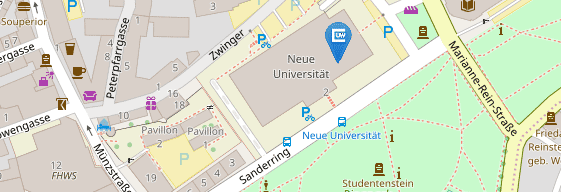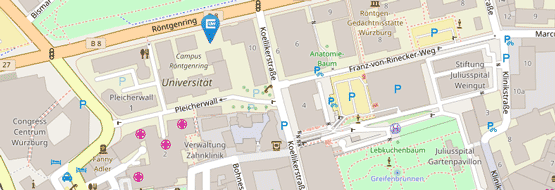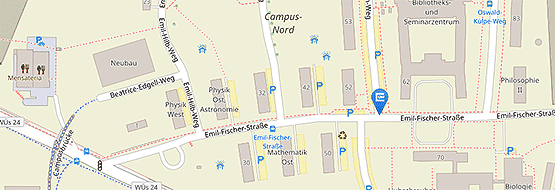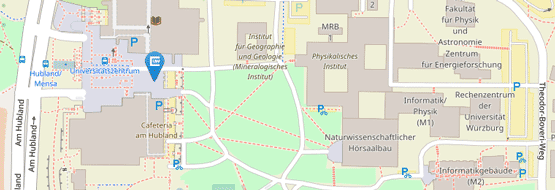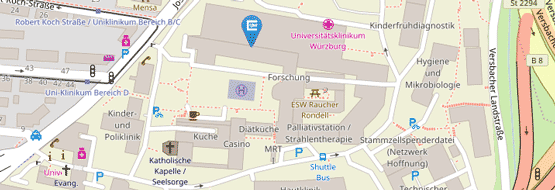Projekt A5 Kittel/Langenhan
Circadiane Plastizität von Synapsen bei Drosophila melanogaster
Zusammenfassung
Synaptische Plastizität ist eine grundlegende Eigenschaft synaptischer Kommunikation, welche die Modifikation von Neurotransmission durch Aktivität oder externe Signale ermöglicht. Uhrneurone speisen circadiane Impulse in das synaptisch verbundene Nervensystem ein, um physiologische Prozesse zu modifizieren. Obwohl gezeigt werden konnte, dass neuronale Morphologie und Erregbarkeit täglich rhythmischen Schwankungen ausgesetzt sind, ist erstaunlich wenig darüber bekannt, wie circadiane Plastizität die molekulare Komposition und Funktion von Synapsen beeinflusst. Dieses Projekt wird sich grundlegenden Fragestellungen bezüglich des Einflusses circadianer Rhythmik auf die synaptische Proteinkomposition in Drosophila melanogaster widmen.
Speziell wird untersucht werden, ob rhythmische Fluktuationen synaptischer Proteine funktionelle synaptische Veränderungen vermitteln. Die Expression von Proteinen, welche an der Transmitterfreisetzung an aktiven Zonen und der postsynaptischen Signalrezeption beteiligt sind, wird zu verschiedenen Zeitpunkten des circadianen Zyklus evaluiert und mit dem funktionellen Staus einzelner Synapsen korreliert werden. Dabei werden fluoreszensmikroskopische Techniken und elektrophysiologische Ableitungen mit Einzelzellauflösung zum Einsatz kommen.
Um darüber hinaus synaptische Proteinlevel unter Bedingungen gestörter circadianer Rhythmik zu untersuchen, wird die transgene Expression der Protease des Tobacco etch virus (TEV) mit TEV-spaltbaren Uhrproteinen kombiniert werden. Dieser Ansatz soll es ermöglichen, die Auswirkungen eines akuten Abschaltens der biologischen Uhr auf die Generierung rhythmischer Fluktuationen von Synapsenproteinen in individuellen Neuronen zu studieren.
Publikationen
-
The human cognition-enhancing CORD7 mutation increases active zone number and synaptic release. . In Brain. 2022.
- [ URL ]
-
Complexin cooperates with Bruchpilot to tether synaptic vesicles to the active zone cytomatrix. . In Journal of Cell Biology, 218(3), pp. 1011–1026. 2019.
- [ URL ]
-
Implications of the Sap47 null mutation for synapsin phosphorylation, longevity, climbing proficiency and behavioural plasticity in adult Drosophila. . In Journal of Experimental Biology, 222(19). 2019.
- [ URL ]
-
Parallel Genomic Engineering of Two Drosophila Genes Using Orthogonal attB/attP Sites. . In G3 Genes|Genomes|Genetics, 8(9), pp. 3109–3118. 2018.
- [ URL ]
-
Mechano-dependent signaling by Latrophilin/CIRL quenches cAMP in proprioceptive neurons. . In eLife, 6, H. J. Bellen (ed.), p. e28360-. 2017.
- [ URL ]
-
Drosophila active zones: from molecules to behaviour. . In Neuroscience research. 2017.
-
Adhesion GPCRs as a putative class of metabotropic mechanosensors. . In Adhesion G Protein-coupled Receptors, pp. 221–247. 2016.
-
Optogenetics in Drosophila neuroscience. . In Optogenetics: Methods and Protocols, pp. 167–175. 2016.
-
Synaptic vesicle proteins and active zone plasticity. . In Frontiers in synaptic neuroscience, 8, p. 8. 2016.
-
cAMP signals in Drosophila motor neurons are confined to single synaptic boutons. . In Cell reports, 17(5), pp. 1238–1246. 2016.
-
Control of adhesion GPCR function through proteolytic processing. . In Adhesion G Protein-coupled Receptors, pp. 83–109. 2016.
-
Effects of transgenic expression of botulinum toxins in Drosophila. . In Journal of neurogenetics, 30(1), pp. 22–31. 2016.
- [ URL ]
-
Adhesion G protein-coupled receptors in nervous system development and disease. . In Nature Reviews Neuroscience. 2016.
- [ URL ]
-
Model Organisms in G Protein–Coupled Receptor Research. . In Molecular Pharmacology, 88(3), pp. 596–603. 2015.
- [ URL ]
-
Super-resolution microscopy of the synaptic active zone. . In Frontiers in cellular neuroscience, 9. Frontiers Media SA, 2015.
- [ URL ]
-
The Adhesion GPCR Latrophilin/CIRL Shapes Mechanosensation. . In Cell Reports, 11(6), pp. 866–874. 2015.
- [ URL ]
-
Bruchpilot and Synaptotagmin collaborate to drive rapid glutamate release and active zone differentiation. . In Frontiers in cellular neuroscience, 9. Frontiers Media SA, 2015.
- [ URL ]
-
Quantitative super-resolution imaging of Bruchpilot distinguishes active zone states. . In Nature communications, 5. Nature Publishing Group, 2014.
- [ URL ]
-
Channelrhodopsin-2--XXL, a powerful optogenetic tool for low-light applications. . In Proceedings of the National Academy of Sciences, 111(38), pp. 13972–13977. 2014.
-
Matching structure with function: the GAIN domain of adhesion-GPCR and PKD1-like proteins. . In Trends in pharmacological sciences, 34(8), pp. 470–478. 2013.
Kontakt/Contact
Dr Robert J Kittel
Institute of Physiology, Neurophysiology
University of Würzburg
Röntgenring 9
D-97070 Würzburg, Germany
Phone: +49 (0)931 31 86046
Mail: robert.kittel@uni-wuerzburg.de
Web: www.kittel-lab.com
Prof. Tobias Langenhan, M.D. D.Phil. (Oxon)
Institute of Physiology, Neurophysiology
University of Wuerzburg
Röntgenring 9
D-97070 Würzburg, Germany
Phone: +49 (0)931 31 88681
Mail: tobias.langenhan@uni-wuerzburg.de
Web: www.langenhan-lab.org

